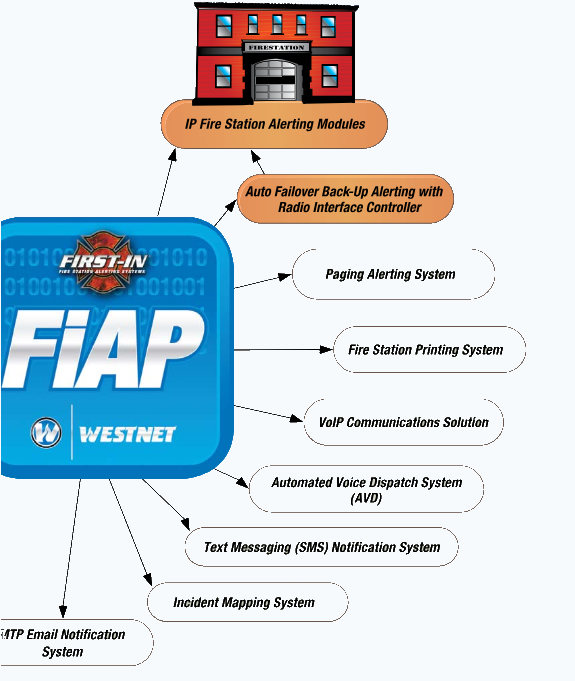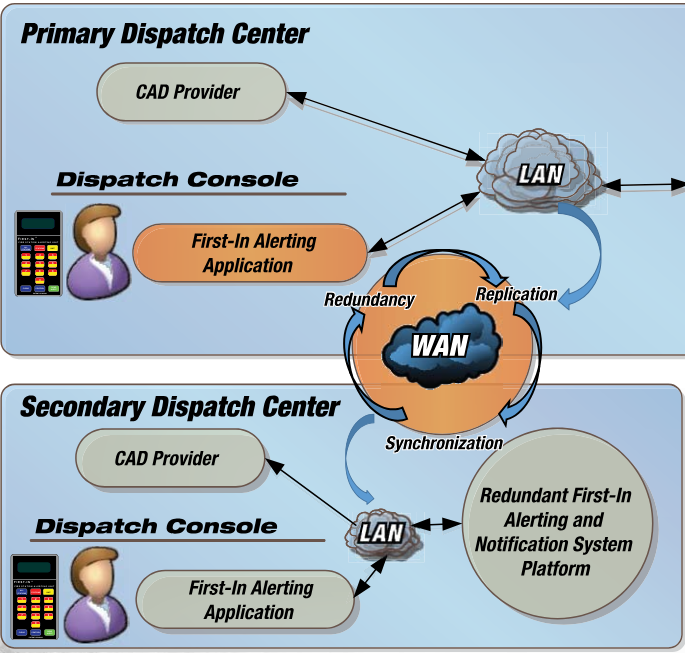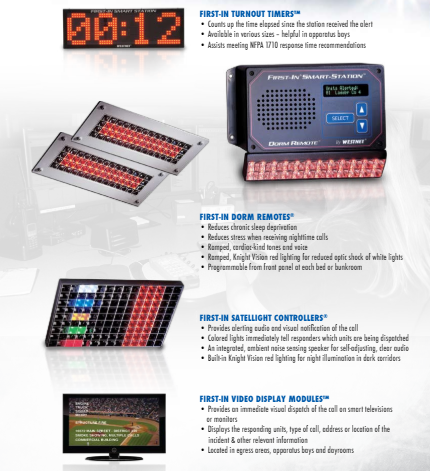Dispatch Alerting Systems
Simplify call processing and reduce response times with the First-In Alerting Platform. Our system communicates with CAD, providing a variety of redundant automatic and manual alerting options, and performs several immediate and simultaneous functions, making dispatching more efficient, helping save more lives and property.
First responders, communities, fire incident victims, and municipal officials
all benefit from dispatch alert software:
Features & Benefits
-
IP Alerting of All Stations in Under One Second
-
Automated Voice Dispatching
-
Call Event History and Logging
-
Displays the Status of the Alert
-
Displays Interface Connectivity Status of Multiple Integrated Systems
-
Performs Special Dispatch Functions & Non-CAD Alerts
-
Sends Emergency and Non-Emergency Alerts by Units, Stations, or Groups
- Automatic Failover to Wireless Backup Alerting (RIC)
- Acts as a Backup to CAD if CAD is Down
- NFPA 1221 Health Monitoring
- Displays Network Status of All Stations
- Fast, Manual Alerting of One, Several or All Stations Ability to Remotely Place Station(s) In and Out of Monitor Mode
- Updates Redundant Servers at Backup Dispatch Center
AUTOMATED VOICE DISPATCH
Westnet’s First-In Automated Voice Dispatching System, (AVD) is a wholly automated text-to-speech system that becomes the dispatch voice for the call.
This time-saving technology provides dispatchers with a fast and consistent method of transmitting the call over the primary dispatch channel to crews in and out of quarters.

RADIO INTERFACE CONTROLLER
It’s inevitable that a network connection to a station will be lost, even if for just a few seconds. Losing that connection in the midst of alert can result in lengthy delays, or worse, a missed alert.
The First-In Radio Interface Controller (RIC) uses the dispatch center’s radio system to provide wireless alerting of the fire stations by units, stations or groups. If within one second, the FiAP does not receive immediate confirmation that the IP alert was successful, it immediately activates the RIC so that there is no delay in alerting the station.
The FiAP can also be programmed to automatically activate a remote station where there is no established network connection.

DISPATCH ALERT MODULES
Alert modules in the fire station are activated by Westnet’s Alerting Platform and Automated Voice Dispatch Systems.
The First-In Fire Station Alerting System has an extensive listing of in-station equipment to choose from. For more information on our Fire Station Alerting Modules, please see the First-In Fire Station Alerting catalog or visit us at www.FirstinAlerting.com.
The First-In Fire Station Alerting System is a commercial, off the shelf station alerting system that is an affordable, scalable, flexible system designed to be used in any size department.
Specifically engineered to reduce response times and lower first responder stress levels, First-In provides all of the information necessary for fire and medical crews to respond quickly.

ALERTING PLATFORM SERVICES
The First-In Alerting Platform, (FiAP), provides users with a variety of alerting notification methods both within and outside of the fire station.
Alerts and notifications are sent to first responder’s pagers, cell phones and email accounts. The First-In Alerting Platform allows Dispatch to designate which personnel receive the alerts.

FAQs
-
The benefits of using dispatch alerts include faster response times, improved situational awareness, and enhanced coordination among emergency responders.
-
Dispatch alert systems need to have real-time updates, integration with GPS and mapping software, customizable alert settings, and compatibility with various communication devices.
-
Automated dispatch voice systems improve efficiency by providing clear, consistent, and immediate instructions to responders, reducing the risk of miscommunication and delays.
-
Unit dispatch software plays a crucial role in modern emergency operations by streamlining dispatch processes, tracking unit locations, and ensuring that the closest and most appropriate resources are deployed quickly.
-
Dispatch technology enhances communication during emergencies by providing real-time information, facilitating seamless coordination, and ensuring that all responders receive accurate and timely updates.

